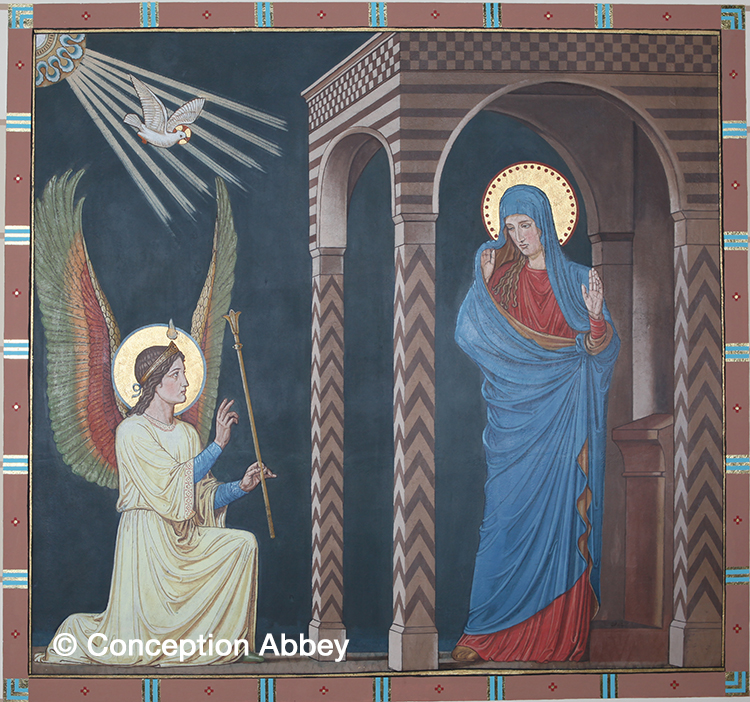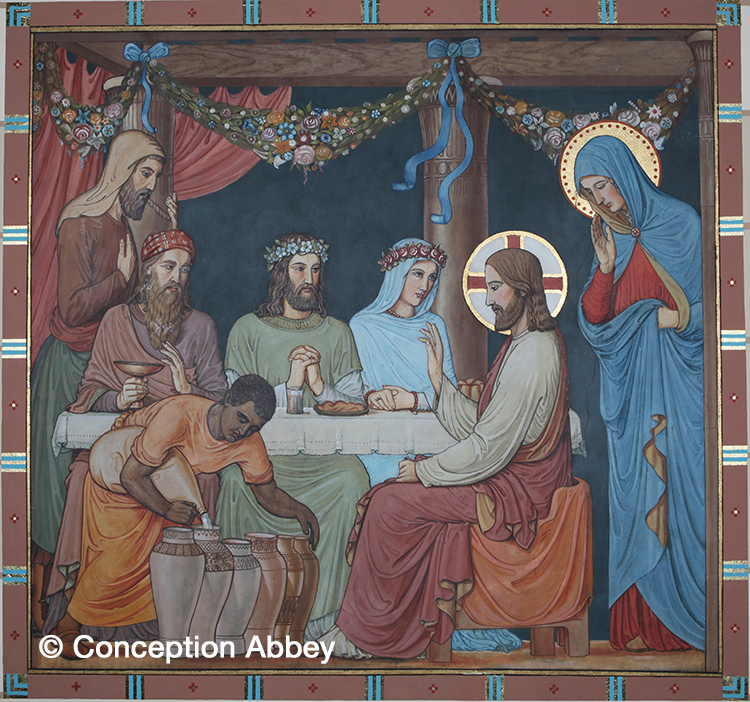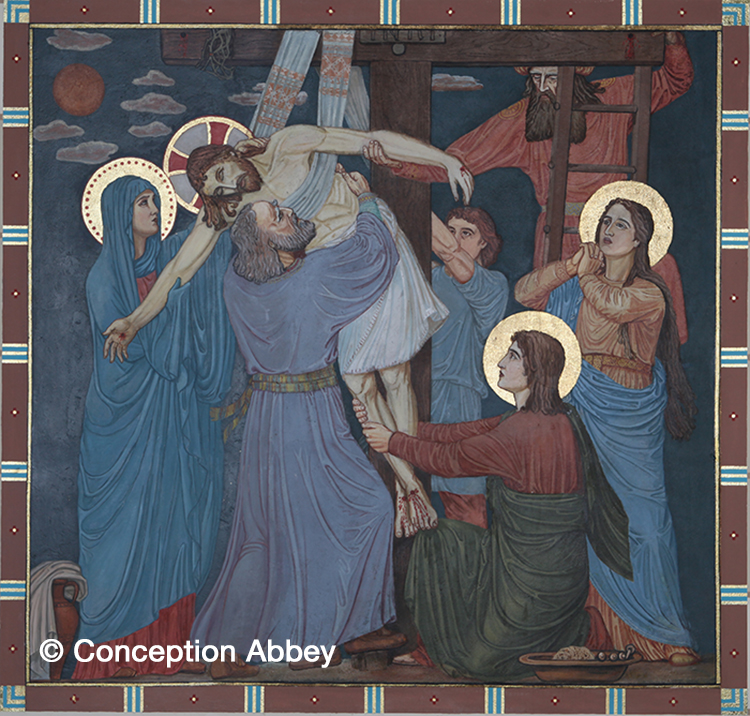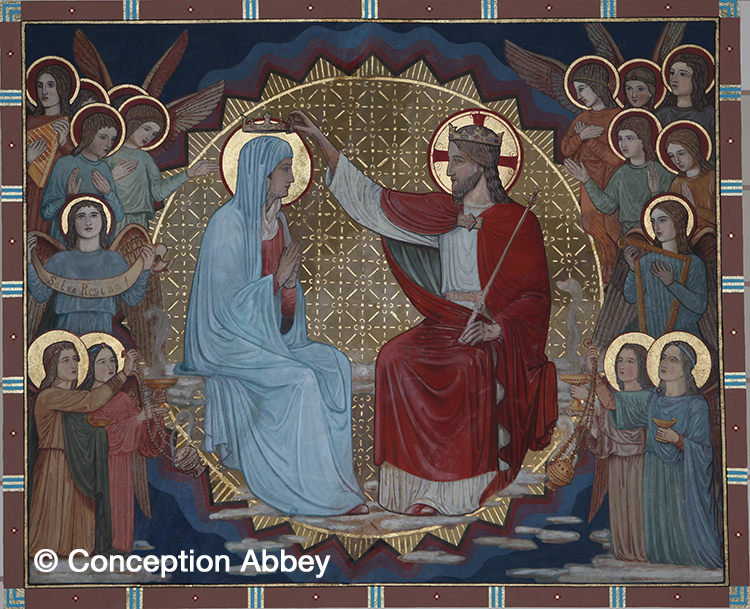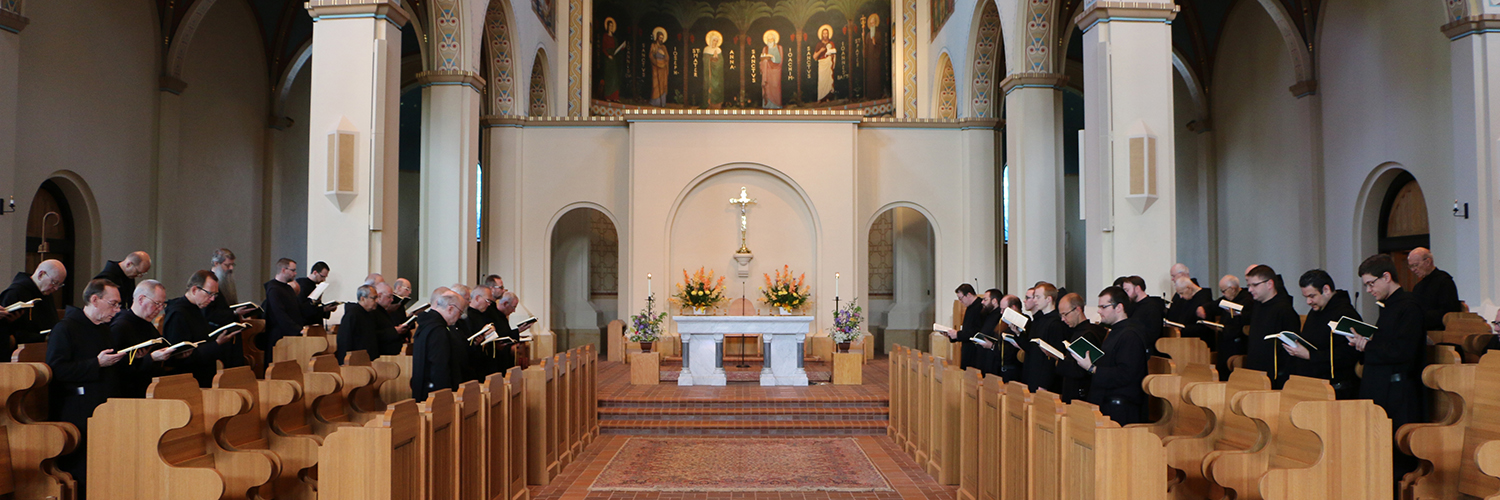
Beuronese Murals
The Basilica's murals are the most striking feature of its interior decoration. They are fine examples of a style of art called Beuronese. More important, however, is the fact that the murals - as well as the entire interior decoration - were executed by the monks of Conception Abbey. As much as the building itself, the murals testify to the aspirations of the monastery's forefathers. In 1892, three candidates arrived at Conception from the monastery of Beuron in southwest Germany, two of whom had studied art there. This opened the way for the Basilica's redecoration after the damage of the 1893 tornado was repaired. Abbot Frowin wrote: "On the advice of Fr. Lukas, I am ready to paint our church with the help of our fraters and brothers ... To my regret, I found out that the archabbot of Beuron could not accommodate us by lending a painter from his school." (Diary, August 17, 1893)
Beuronese art was revolutionary for its time, and also characteristic of its time. It offered a stylized, simplified, and hieratic approach to art which went against the grain of contemporary romantic forms. Yet its search for the pure and ideal is not unlike the movements in the revival of the liturgy and music - and even non-Catholic and “secular” counterparts such as the utopian movements or, as in literature, the transcendentalist movement. Abbot Frowin, also a child of his time, was searching for the simplicity of a “pure” romanesque. It is not surprising that he saw the “pure” simplicity of Beuronese art as fitting decoration for his church.
Between 1893 and 1897, several monks of Conception, most notable Lukas Etlin (d. 1927), Hildebrand Roseler (d. 1923), and Ildephonse Kuhn (d. 1921), the latter two of whom had studied art at Beuron, redecorated the walls and ceiling of the Abbey church primarily in the Beuronese manner, retaining elements of the original Victorian stenciling. This is a curious anomaly since one of the Beuronese canons was that all decoration should be done without a stencil. Conception’s was the first church in the United States so decorated. The apse painting of the Immaculate Conception is an original work by Lukas Etlin. The eighteen murals in the central axis are copies from twenty-two scenes of the Life of Mary cycle painted in the church of Emaus Abbey in Prague, Czechoslovakia, under the direction of Lenz, Wüger, and Steiner between the years 1880-1887. Wüger, who favored less stylized figures and softer tones, was the principal artist behind this project. The church at Emaus was bombed and gutted by fire in 1945, leaving Conception’s murals as perhaps the most complete replica of the Emaus originals. The four transept murals are scenes from the Life of Benedict cycle originally painted at the abbey of Monte Cassino in Italy. Executed under the direction of Lenz and Wüger in the years 1876-1880, they were destroyed in the bombardment of that monastery during World War II.

